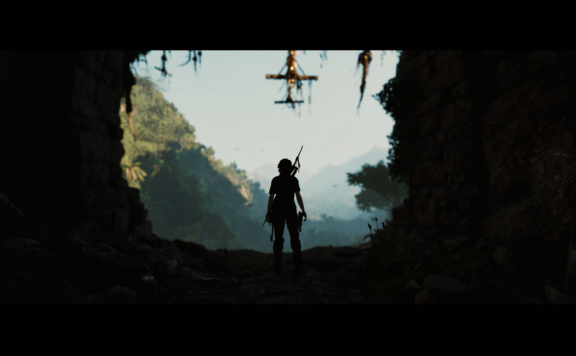People have a lot on their minds at the moment, so celebrations for the 20th anniversary of the PlayStation 2 console have been relatively muted. Still, plenty of gamers have been reflected on their memories of the console and picking out some of the best titles of the PS2’s reign. GTA: San Andreas, Metal Gear Solid 3: Snake Eater, Gran Turismo 4 and a host of others tend to get picked out as best examples of games that are timeless.
Indeed, when reflecting on PS2, it’s plain to see that the console acts as the introduction of modern gaming. It was a trailblazer in so many ways. Although, it didn’t get everything right. Tomb Raider games on PS2 didn’t really match the expectations of what the series delivered previously on PS1 or PC, nor its resurgence over the last few years. However, some of the Tomb Raider games on PS2 are worthy of another look; a different view put through a modern lens.
We should remember that Tomb Raider is a vast media enterprise. Not only are there 17 principal games for consoles and PC, but countless mobile games, several films, knock-off content, comics, and even a range of casino games – click here to read more – casino.com/ca/slots/. But what we want to concentrate on here is the four main tiles on PS2: Tomb Raider: Angel of Darkness (2003); Tomb Raider: Legend (2006); Tomb Raider Anniversary (2007) and Tomb Raider: Underworld (2008).
Angel of Darkness Flopped
Starting with the sixth game in the franchise, Angel of Darkness, which was the first time we saw Lara Croft on PS2. The game was specifically designed for PS2 and its deliverance of modern gaming, something summed up in its working title of Tomb Raider Next Generation. However, the game was beset by problems in production issues (it took three years).
Sales were initially very strong; after all, who wouldn’t want to play a new Tomb Raider game on PS2? But the critical reception was not so kind. We can some it up succinctly as, “brilliant character development and intriguing storyline, terrible gameplay and controls.” Has the game aged well? Not really, as the problems persist. In fact, Angel of Darkness is often cited as one of the biggest disappointments of the era. However, some of the experimentation in gameplay was later picked up and perfected by developers late. In that respect, Angel of Darkness is an important release.

Because of the problems with Angel of Darkness, coupled with the fact that other Tomb Raider media was also feeling a bit tired, expectations were low for Tomb Raider: Legend before its 2006 release. It was the first reboot of the series, rather than a sequel, with Crystal Dynamics taking over as developers.
The game was a critical success, with many of Crystal Dynamic’s gambles – character and gameplay redesign, notably – paying off. Going back to an origin story for Lara Croft gave a fresh feeling to the story, and the controls and gameplay problems were, more or less, fixed. Legends was by no means perfect, being quite repetitious at times. However, it was a bounce back to form, and optimism returned for subsequent releases.
Anniversary Among the Best Tomb Raider Games
Tomb Raider: Anniversary and Tomb Raider: Underworld were developed together, although released a year apart in 2007 and 2008 respectively. Anniversary was a remake of the original Tomb Raider game, released for PS1 and Sega Saturn. It’s recognised as one of the best-ever Tomb Raider games, and undoubtedly the best of the PS2 era. Notably, Anniversary was also one of the series first major successes on mobile. Gameplay, storyline, graphics and everything else was on point. And, the game still holds up today.
Underworld, while not a bad addition to the series, didn’t hit the heights of Anniversary. Still, it’s a decent story and continues some of the themes we found in Legends. The first Tomb Raider game for PS3 and Xbox 360, it also provided hints of what a modern Tomb Raider game should offer through extra downloadable content (not on PS2, of course). Indeed, the PS2 version of Underworld came in for most criticism. Still, when combined with Anniversary, it meant that PS2 was handing over a popular franchise to a new generation of consoles.







